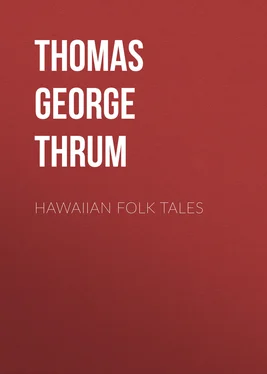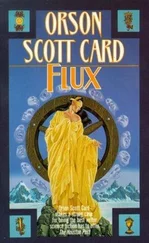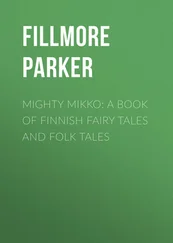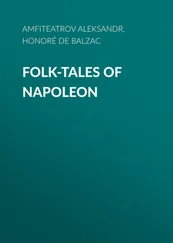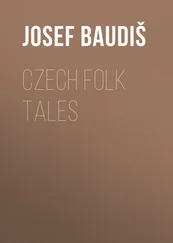Thomas George Thrum - Hawaiian Folk Tales
Здесь есть возможность читать онлайн «Thomas George Thrum - Hawaiian Folk Tales» — ознакомительный отрывок электронной книги совершенно бесплатно, а после прочтения отрывка купить полную версию. В некоторых случаях можно слушать аудио, скачать через торрент в формате fb2 и присутствует краткое содержание. Жанр: Старинная литература, foreign_antique, Сказка, на английском языке. Описание произведения, (предисловие) а так же отзывы посетителей доступны на портале библиотеки ЛибКат.
- Название:Hawaiian Folk Tales
- Автор:
- Жанр:
- Год:неизвестен
- ISBN:нет данных
- Рейтинг книги:4 / 5. Голосов: 1
-
Избранное:Добавить в избранное
- Отзывы:
-
Ваша оценка:
- 80
- 1
- 2
- 3
- 4
- 5
Hawaiian Folk Tales: краткое содержание, описание и аннотация
Предлагаем к чтению аннотацию, описание, краткое содержание или предисловие (зависит от того, что написал сам автор книги «Hawaiian Folk Tales»). Если вы не нашли необходимую информацию о книге — напишите в комментариях, мы постараемся отыскать её.
Hawaiian Folk Tales — читать онлайн ознакомительный отрывок
Ниже представлен текст книги, разбитый по страницам. Система сохранения места последней прочитанной страницы, позволяет с удобством читать онлайн бесплатно книгу «Hawaiian Folk Tales», без необходимости каждый раз заново искать на чём Вы остановились. Поставьте закладку, и сможете в любой момент перейти на страницу, на которой закончили чтение.
Интервал:
Закладка:
So Maui-mua said: “Tell me, where is the fire?”
The alae replied: “It is in the leaf of the a-pe plant” (Alocasia macrorrhiza).
So, by the direction of the alae, Maui-mua began to rub the leaf-stalk of the a-pe plant with a piece of stick, but the fire would not come. Again he asked: “Where is this fire that you are hiding from me?”
The alae answered: “In a green stick.”
And he rubbed a green stick, but got no fire. So it went on, until finally the alae told him he would find it in a dry stick; and so, indeed, he did. But Maui-mua, in revenge for the conduct of the alae, after he had got the fire from the dry stick, said: “Now, there is one thing more to try.” And he rubbed the top of the alae’s head till it was red with blood, and the red spot remains there to this day.
III
Pele and the Deluge
All volcanic phenomena are associated in Hawaiian legendary lore with the goddess Pele; and it is a somewhat curious fact that to the same celebrated personage is also attributed a great flood that occurred in ancient times. The legends of this flood are various, but mainly connected with the doings of Pele in this part of the Pacific Ocean. The story runs thus:
Kahinalii was the mother of Pele; Kanehoalani was her father; and her two brothers were Kamohoalii and Kahuilaokalani. Pele was born in the land of Hapakuela, a far-distant land at the edge of the sky, toward the southwest. There she lived with her parents until she was grown up, when she married Wahialoa; and to these were born a daughter named Laka, and a son named Menehune. But after a time Pele’s husband, Wahialoa, was enticed away from her by Pele-kumulani. The deserted Pele, being much displeased and troubled in mind on account of her husband, started on her travels in search of him, and came in the direction of the Hawaiian Islands. Now, at that time these islands were a vast waste. There was no sea, nor was there any fresh water. When Pele set out on her journey, her parents gave her the sea to go with her and bear her canoes onward. So she sailed forward, flood-borne by the sea, until she reached the land of Pakuela, and thence onward to the land of Kanaloa. From her head she poured forth the sea as she went, and her brothers composed the celebrated ancient mele:
O the sea, the great sea!
Forth bursts the sea:
Behold, it bursts on Kanaloa!
But the waters of the sea continued to rise until only the highest points of the great mountains, Haleakala, Maunakea, and Maunaloa, were visible; all else was covered. Afterward the sea receded until it reached its present level. This event is called the Kai a Kahinalii (Sea of Kahinalii), because it was from Kahinalii, her mother, that Pele received the gift of the sea, and she herself only brought it to Hawaii.
And from that time to this, Pele and all her family forsook their former land of Hapakuela and have dwelt in Hawaii-nei, Pele coming first and the rest following at a later time.
On her first arrival at Hawaii-nei, Pele dwelt on the island of Kauai. From there she went to Kalaupapa, 1 1 Now the Leper Settlement.
on the island of Molokai, and dwelt in the crater of Kauhako at that place; thence she departed to Puulaina, 2 2 The hill visible from the Lahaina anchorage to the north of Lahainaluna School, and near to it.
near Lahainaluna, where she dug out that crater. Afterward she moved still further to Haleakala, where she stayed until she hollowed out that great crater; and finally she settled at Kilauea, on the island of Hawaii, where she has remained ever since. 3 3 It is not a little remarkable that the progress of Pele, as stated in this tradition, agrees with geological observation in locating the earliest volcanic action in this group, on the island of Kauai, and the latest, on the island of Hawaii.—Translator.
IV
Pele and Kahawali
In the reign of Kealiikukii, an ancient king of Hawaii, Kahawali, chief of Puna, and one of his favorite companions went one day to amuse themselves with the holua (sled), on the sloping side of a hill, which is still called ka holua ana o Kahawali (Kahawali’s sliding-place). Vast numbers of the people gathered at the bottom of the hill to witness the game, and a company of musicians and dancers repaired thither to add to the amusement of the spectators. The performers began their dance, and amidst the sound of drums and the songs of the musicians the sledding of Kahawali and his companion commenced. The hilarity of the occasion attracted the attention of Pele, the goddess of the volcano, who came down from Kilauea to witness the sport. Standing on the summit of the hill in the form of a woman, she challenged Kahawali to slide with her. He accepted the offer, and they set off together down the hill. Pele, less acquainted with the art of balancing herself on the narrow sled than her rival, was beaten, and Kahawali was applauded by the spectators as he returned up the side of the hill.
Before starting again, Pele asked him to give her his papa holua, but he, supposing from her appearance that she was no more than a native woman, said: “Aole! (no!) Are you my wife, that you should obtain my sled?” And, as if impatient at being delayed, he adjusted his papa, ran a few yards to take a spring, and then, with this momentum and all his strength he threw himself upon it and shot down the hill.
Pele, incensed at his answer, stamped her foot on the ground and an earthquake followed, which rent the hill in sunder. She called, and fire and liquid lava arose, and, assuming her supernatural form, with these irresistible ministers of vengeance, she followed down the hill. When Kahawali reached the bottom, he arose, and on looking behind saw Pele, accompanied by thunder and lightning, earthquake, and streams of burning lava, closely pursuing him. He took up his broad spear which he had stuck in the ground at the beginning of the game, and, accompanied by his friend, fled for his life. The musicians, dancers, and crowds of spectators were instantly overwhelmed by the fiery torrent, which, bearing on its foremost wave the enraged goddess, continued to pursue Kahawali and his companion. They ran till they came to an eminence called Puukea. Here Kahawali threw off his cloak of netted ki leaves and proceeded toward his house, which stood near the shore. He met his favorite pig and saluted it by touching noses, then ran to the house of his mother, who lived at Kukii, saluted her by touching noses, and said: “Aloha ino oe, eia ihonei paha oe e make ai, ke ai mainei Pele.” (Compassion great to you! Close here, perhaps, is your death; Pele comes devouring.) Leaving her, he met his wife, Kanakawahine, and saluted her. The burning torrent approached, and she said: “Stay with me here, and let us die together.” He said: “No; I go, I go.” He then saluted his two children, Poupoulu and Kaohe, and said, “Ke ue nei au ia olua.” (I grieve for you two.) The lava rolled near, and he ran till a deep chasm arrested his progress. He laid down his spear and walked over on it in safety. His friend called out for his help; he held out his spear over the chasm; his companion took hold of it and he drew him securely over. By this time Pele was coming down the chasm with accelerated motion. He ran till he reached Kula. Here he met his sister, Koai, but had only time to say, “Aloha oe!” (Alas for you!) and then ran on to the shore. His younger brother had just landed from his fishing-canoe, and had hastened to his house to provide for the safety of his family, when Kahawali arrived. He and his friend leaped into the canoe, and with his broad spear paddled out to sea. Pele, perceiving his escape, ran to the shore and hurled after him, with prodigious force, great stones and fragments of rock, which fell thickly around but did not strike his canoe. When he had paddled a short distance from the shore the kumukahi (east wind) sprung up. He fixed his broad spear upright in the canoe, that it might answer the double purpose of mast and sail, and by its aid he soon reached the island of Maui, where they rested one night and then proceeded to Lanai. The day following they moved on to Molokai, thence to Oahu, the abode of Kolonohailaau, his father, and Kanewahinekeaho, his sister, to whom he related his disastrous perils, and with whom he took up his permanent abode.
Читать дальшеИнтервал:
Закладка:
Похожие книги на «Hawaiian Folk Tales»
Представляем Вашему вниманию похожие книги на «Hawaiian Folk Tales» списком для выбора. Мы отобрали схожую по названию и смыслу литературу в надежде предоставить читателям больше вариантов отыскать новые, интересные, ещё непрочитанные произведения.
Обсуждение, отзывы о книге «Hawaiian Folk Tales» и просто собственные мнения читателей. Оставьте ваши комментарии, напишите, что Вы думаете о произведении, его смысле или главных героях. Укажите что конкретно понравилось, а что нет, и почему Вы так считаете.
